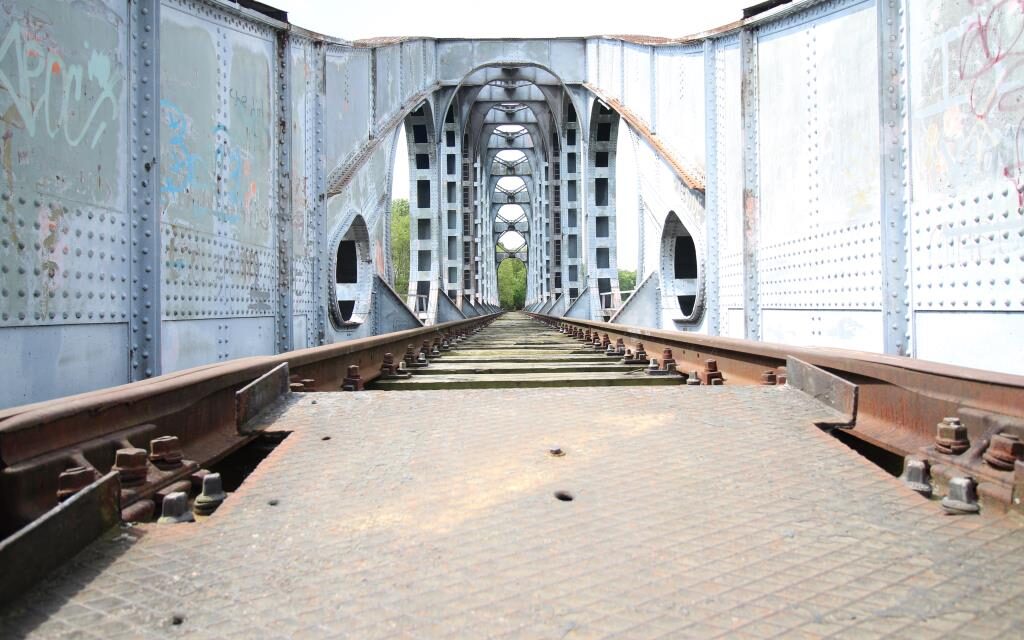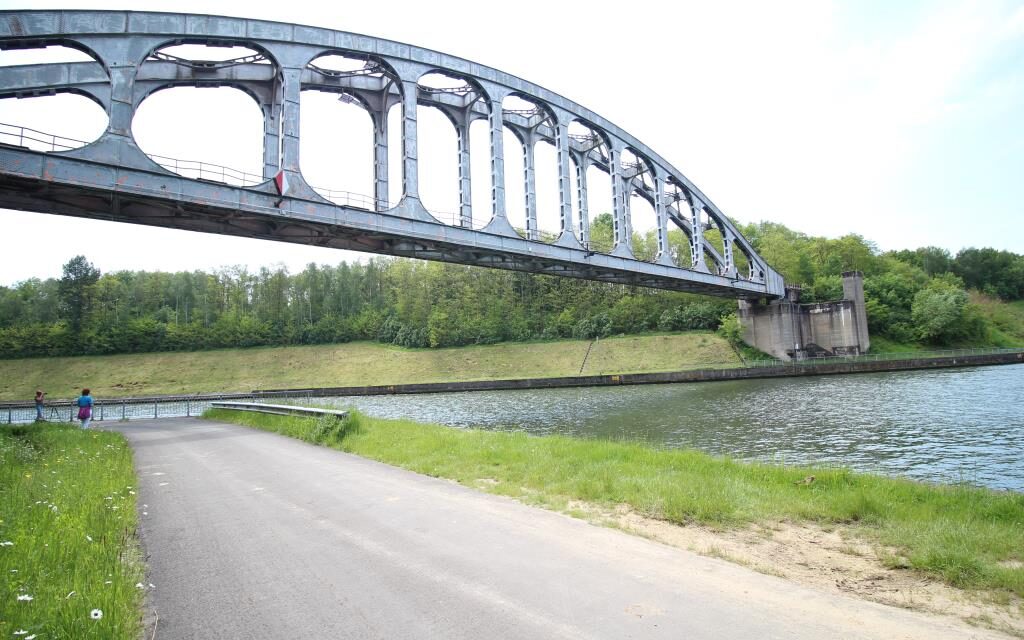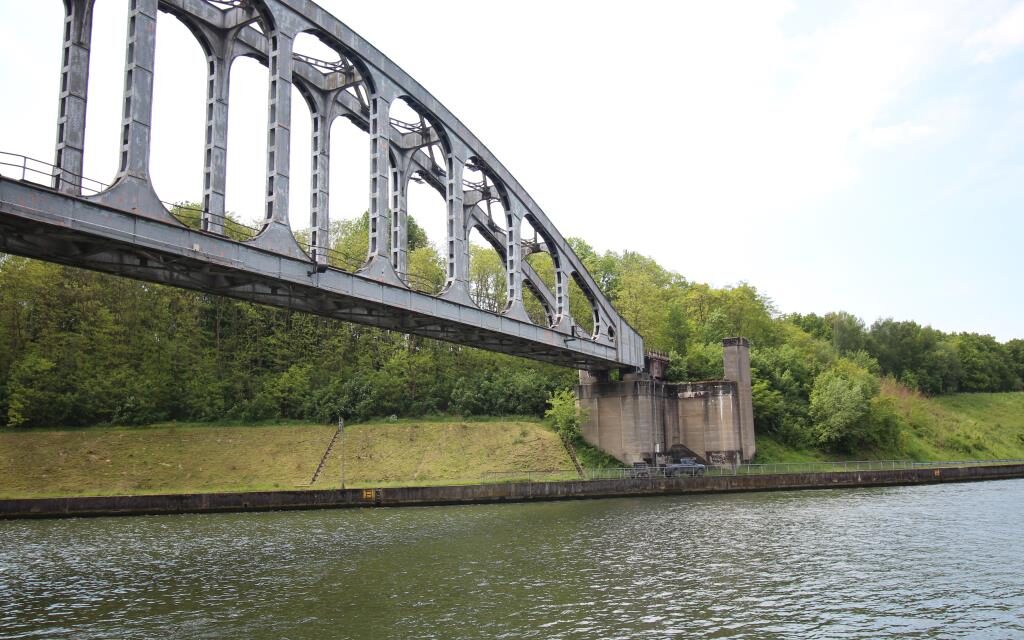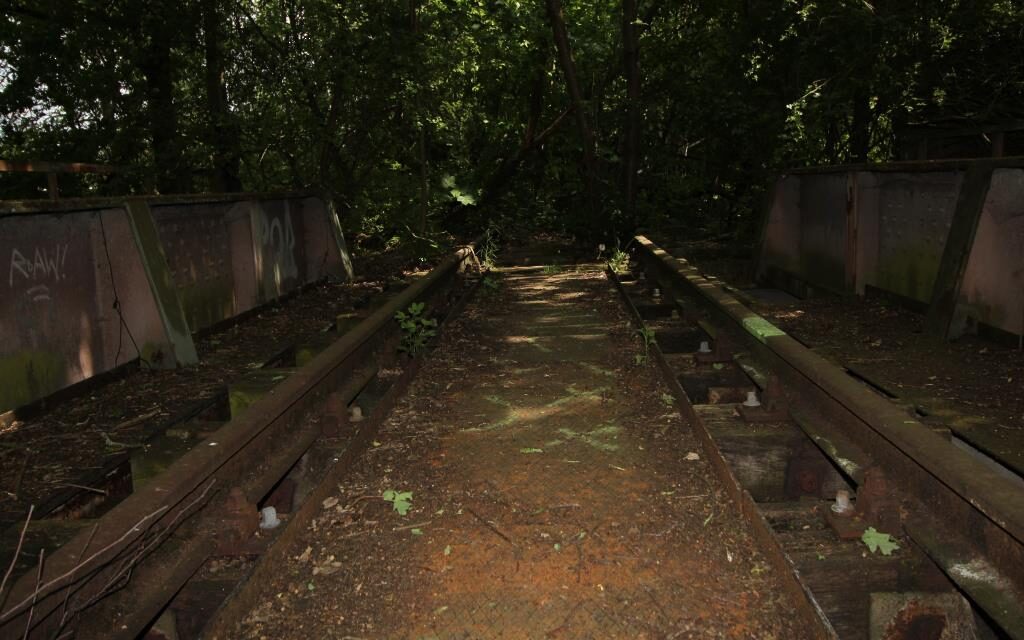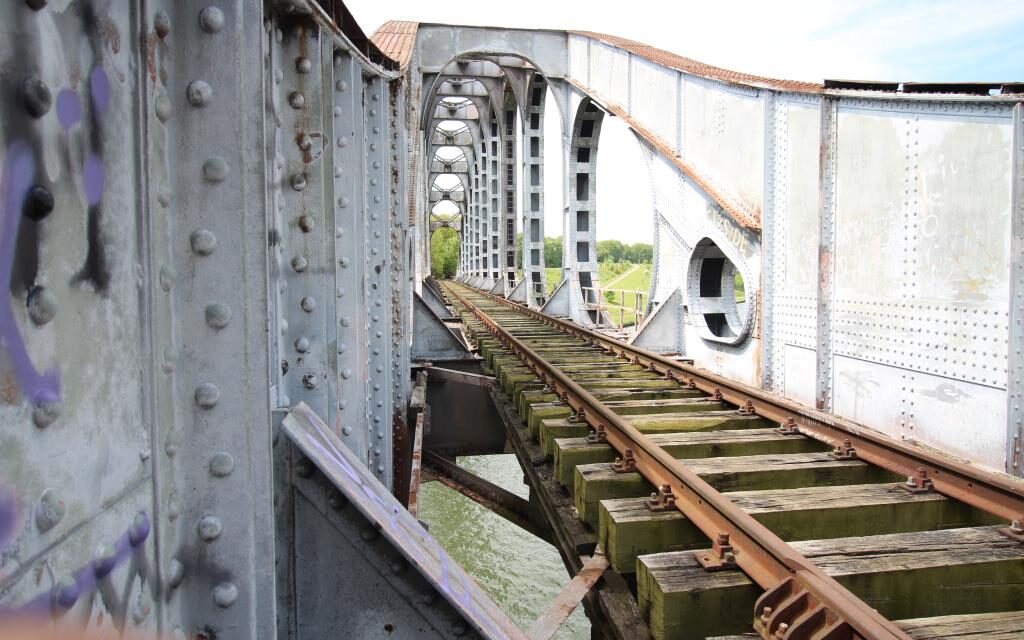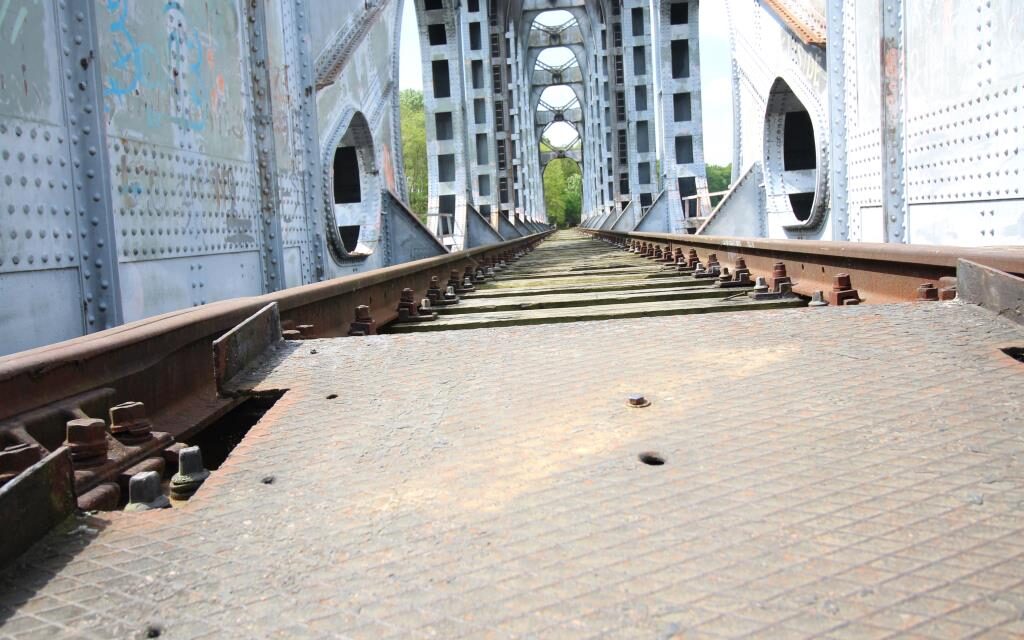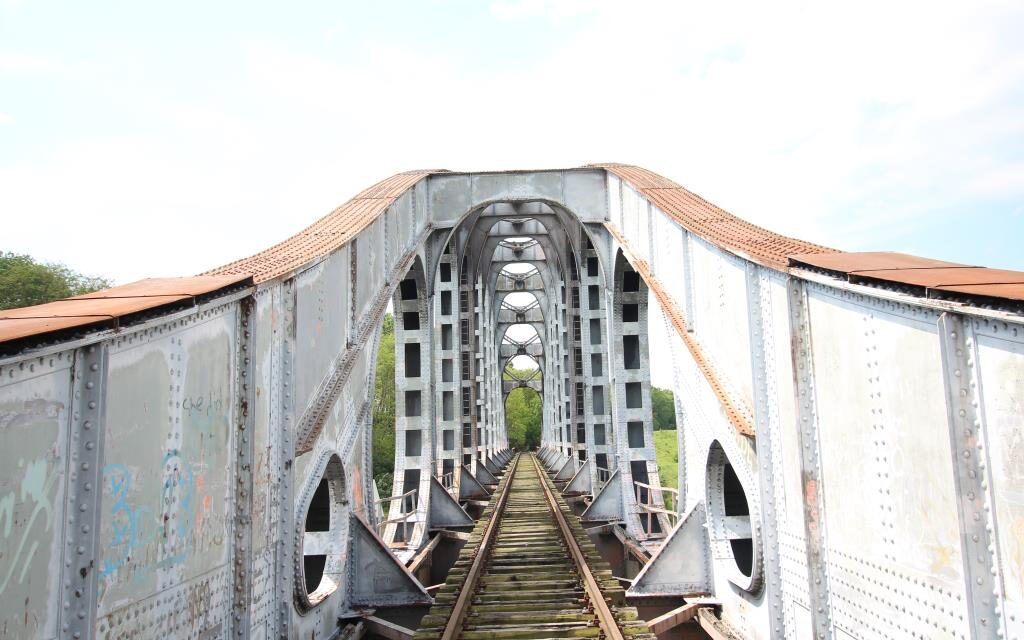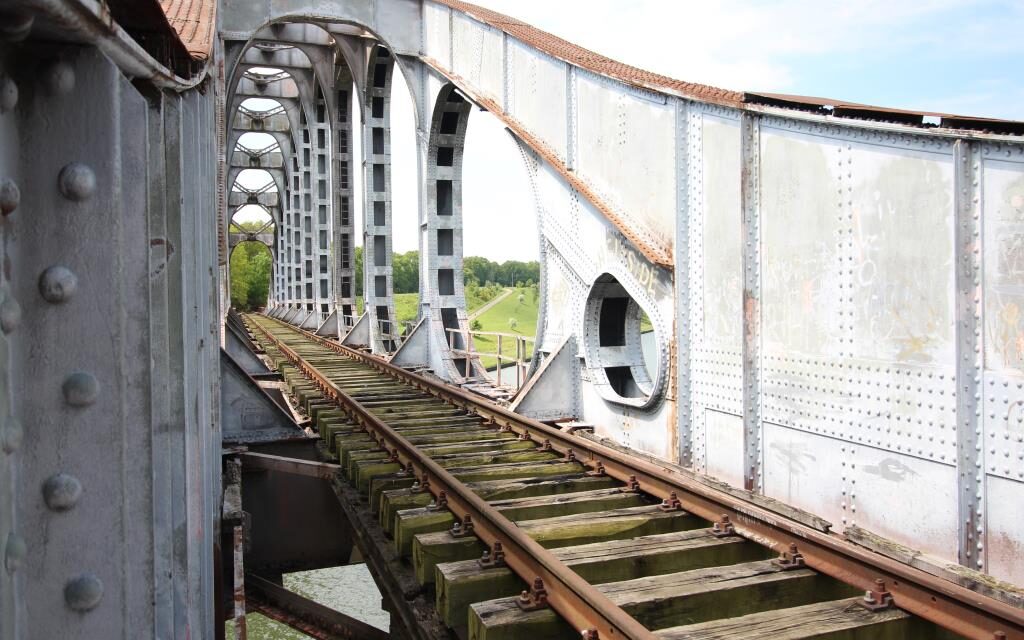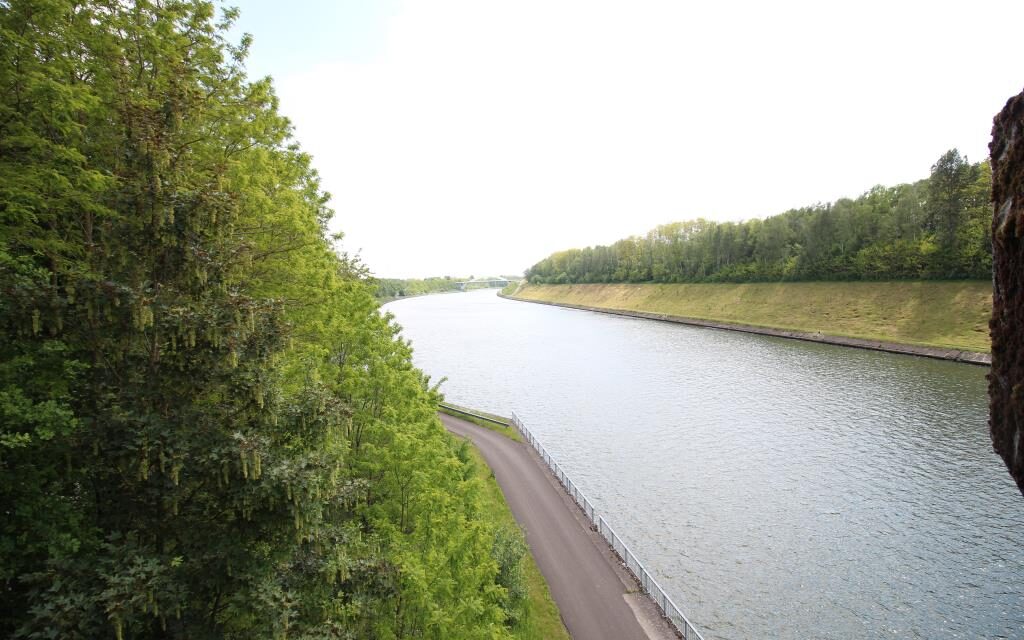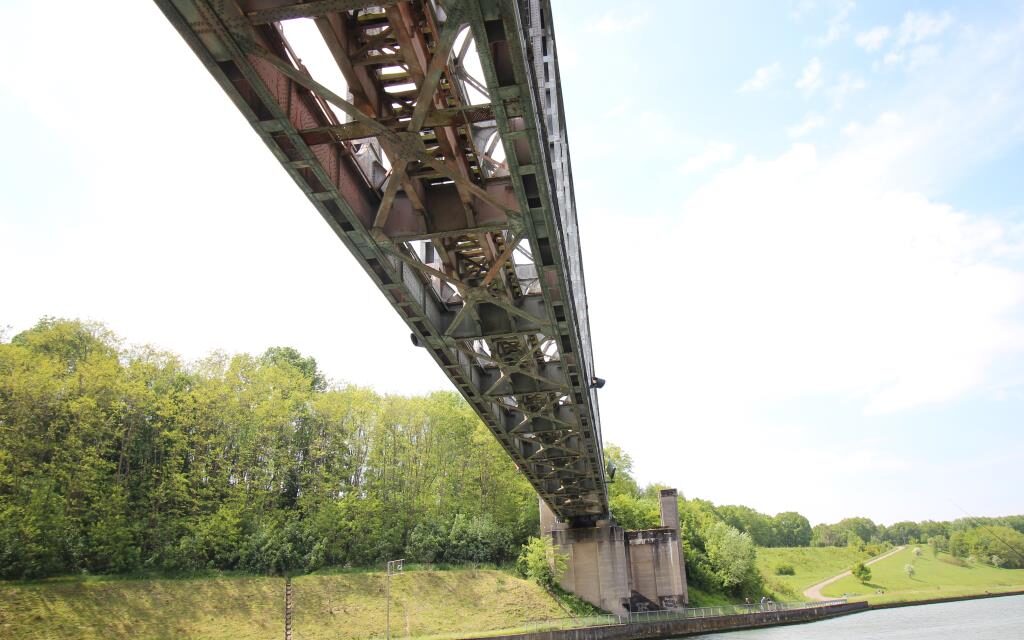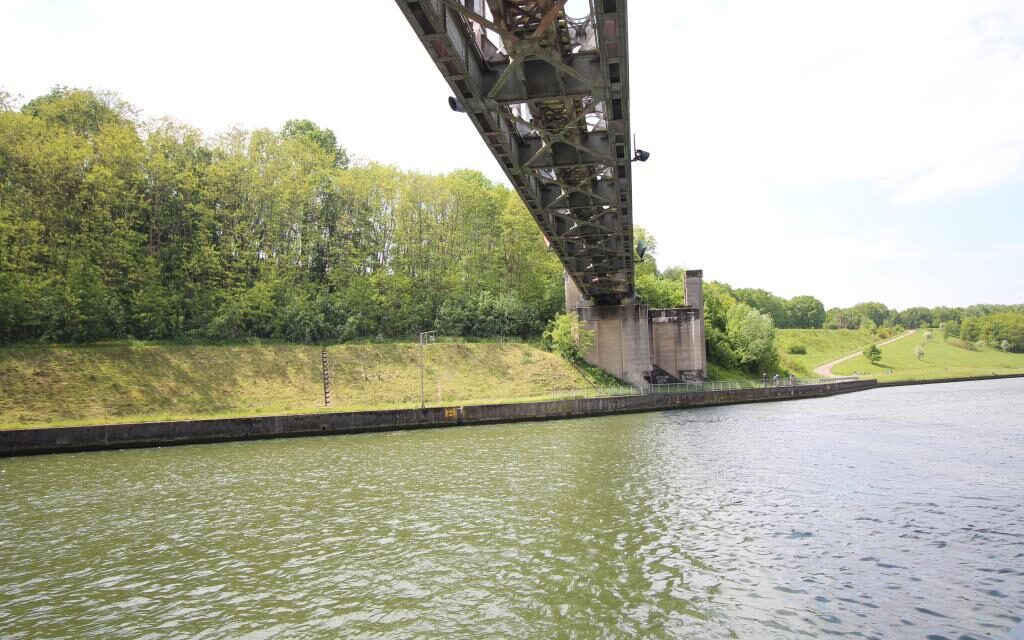Aan de rand van het rustige dorp Gellik, in de Belgische gemeente Lanaken, ligt een indrukwekkend stuk staal dat ooit het ritme van goederenvervoer bepaalde: de spoorbrug over het Albertkanaal. Gebouwd in 1930, tegelijk met de aanleg van het kanaal zelf, overspant deze brug maar liefst 112,75 meter. Ooit een cruciale schakel in de industriële infrastructuur, nu een stille getuige van een ander tijdperk.
Tot 1992 reden hier nog treinen over het spoor. Daarna viel het gebruik stil, en zoals bij zoveel industriële bouwwerken leek de toekomst van de brug onzeker. De afbraakplannen lagen al klaar, maar op het laatste moment kreeg de brug een tweede kans. Dankzij een plaatselijke papierfabriek, die het belang van de spoorverbinding voor hun logistiek inzag, werd de sloop afgeblazen. Daarmee werd niet alleen een functioneel stuk infrastructuur gered, maar ook een waardevol historisch object bewaard.
Vandaag is de brug niet langer in gebruik, maar het staal staat er nog — robuust, verweerd, maar trots. Overwoekerd door gras en struiken aan de kanten, en met roestplekken die getuigen van de jaren die voorbij zijn gegaan. Voor urbexers is het een plek van puur staal en stilte, waar de echo van rijdende wagons enkel nog in de verbeelding leeft.
Wat deze brug zo interessant maakt, is het samenspel tussen verleden en toeval. De meeste oude spoorbruggen verdwijnen zonder veel ruchtbaarheid. Deze niet. Dankzij één fabriek, één beslissing, blijft ze bestaan — als monument, als curiositeit, als uitnodiging tot verkenning.
Een wandeling over de brug is een reis door de tijd. De constructie is nog steeds indrukwekkend, met haar industriële elegantie en eenvoudige kracht. Voor wie houdt van vergeten plekken met een verhaal is dit een bijzondere halte.
The Gellik Railway Bridge: Rust, Rhythm, and a Rescue from Ruin
At the edge of the quiet village of Gellik, in the Belgian municipality of Lanaken, stands a striking piece of industrial engineering: the railway bridge over the Albert Canal. Built in 1930 during the construction of the canal itself, this steel giant spans 112.75 meters. Once an essential link in the country’s freight network, today it stands as a silent witness to a bygone era.
The railway line saw its last train in 1992. After that, the tracks fell silent, and the bridge’s fate seemed sealed. Plans were made for demolition — a common end for unused infrastructure. But at the last moment, a twist of fate intervened. A local paper factory, recognizing the bridge’s strategic value, fought to preserve it. Their effort saved the structure from destruction and ensured its place in the industrial history of the region.
Though no trains pass over it anymore, the bridge still towers over the water — weathered, rusted, yet standing proud. Vegetation creeps along the edges, and time has left its marks on the metal. For urban explorers, it offers a rare glimpse into pure, unadorned steel architecture, where the only sound is the wind — and the imagined rumble of freight wagons long gone.
What makes this bridge fascinating is its near-miss with oblivion. Most old railway bridges fade quietly into memory. This one didn’t. Saved by industry, preserved by necessity, it remains — a monument, a relic, a path worth walking.
Crossing the bridge feels like walking through history. The structure still commands attention, with its raw functionality and enduring presence. For anyone who loves forgotten places with a story, this is a spot worth seeking out.

